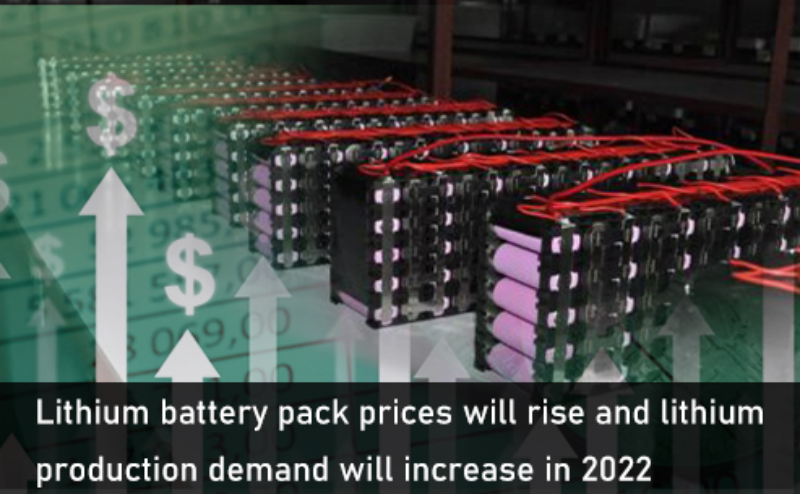
Main content:
Global EV sales in 2021 hit a record high of 6.6 million units. Strong momentum continued in the first quarter of 2022, with 2 million electric vehicles sold globally, up three-quarters from the same period last year. Under the background of carbon neutrality, many factors, such as the policy support of various governments, the continuous upgrading and updating of related technologies, and the gradual maturity of the market, have jointly promoted the rapid development of the electric vehicle industry.
This article will integrate experience from leading markets, combine historical analysis with the latest developments in global electric vehicles, and forecast future market trends. In addition, to speed up the popularization of new energy electric vehicles, it is necessary to step up the development of power batteries with high safety and excellent performance in all aspects. The Top 10 power battery companies on our website will provide you with information on the best power battery battery stores and the latest layout of the industry.
1.Global EV sales almost doubled in 2021 compared to 2020
According to the "Global Electric Vehicle Outlook 2022" report released by the International Energy Agency (IEA) on May 23, about 6.6 million electric vehicles will be sold globally in 2021, almost doubling compared to 2020; It accounts for 10%, which is 4 times the market share in 2019. In 2021, the total number of electric vehicles on the world's roads will reach about 16.5 million, double the number in 2018.
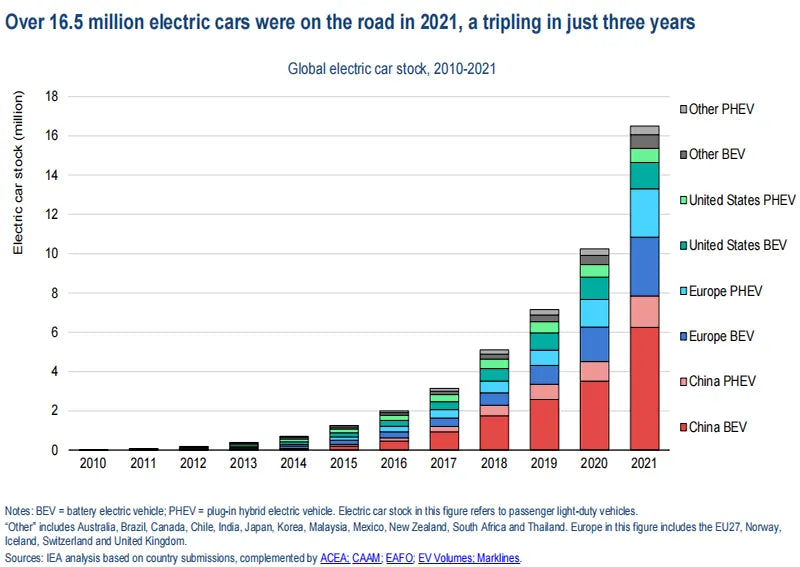
Among them, in 2021, the Chinese market contributed about half of the sales of electric vehicles, reaching 3.3 million units, which exceeded the global sales of electric vehicles in 2020. The report noted that the price gap between China's electric vehicles and their competitors is narrowing, along with lower R&D and manufacturing costs. In 2021, the median sales-weighted price of electric vehicles in China is only 10% higher than that of conventional vehicles, while the average price in other major markets is 45%-50% higher. In addition, China is also building charging infrastructure faster than most countries and regions.
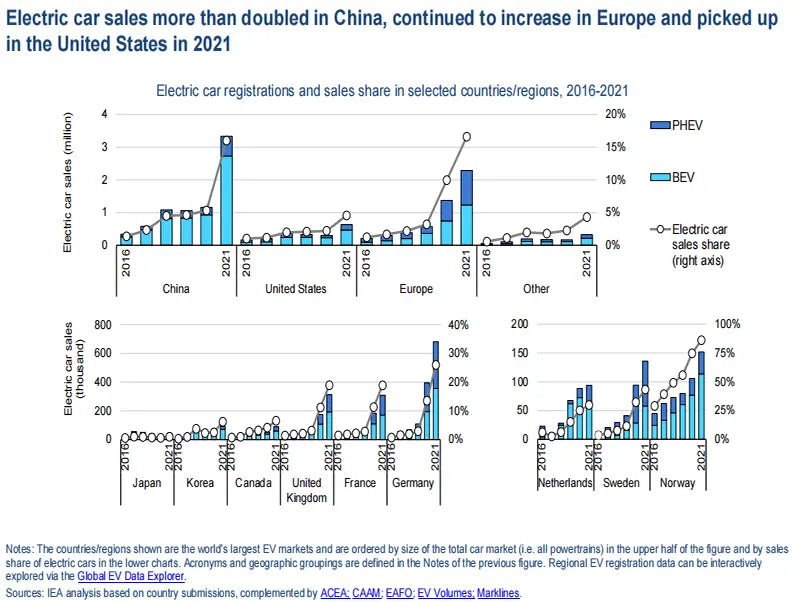
The report also mentioned that in emerging markets such as Brazil, India, and Indonesia, the sales of electric vehicles still lag behind, and the sales of electric vehicles in new cars accounted for less than 0.5%. However, in 2021, the sales of electric vehicles in many countries, including India, have doubled, and if policies and investments are in place, the later development will be faster. Also, as electric vehicles become more popular, the demand for electric golf carts is also growing. The compound annual growth rate of the global golf cart batteries market from 2020 to 2024 is nearly 5%.
2.Continued support policies drive strong growth in global EV sales
In the first quarter of 2022, global electric vehicle sales continued to grow strongly, with a year-on-year growth rate of 75%. Among them, sales in China have more than doubled compared to the same period in 2021, with a 60% increase in the United States and a 25% increase in Europe. Continued supportive policies are the main driver of sales growth for electric vehicles. Global public spending on EV subsidies and incentives will nearly double to nearly $30 billion in 2021.
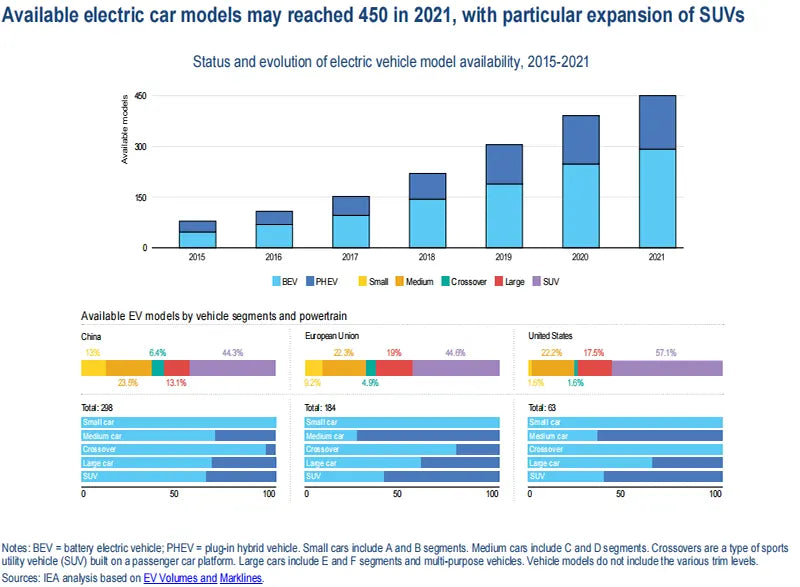
A growing number of countries have committed to phasing out internal combustion engines in the coming decades, or setting ambitious vehicle electrification targets. Meanwhile, many automakers are accelerating their transition to electrification, often further than policy targets. Besides, the number of electric vehicle models offered by automakers increased to about 450 in 2021, a five-fold increase since 2015, increasing the appeal to consumers. Under the IEA's established policy scenario, the global number of electric vehicles is expected to reach about 200 million in 2030 (about 11 times the current electric vehicle population), accounting for more than 20% of global vehicle sales.
3.Supply and costs could slow growth in the electric vehicle sector
The IEA also noted that tight supply and the risk of rising costs could slow growth in the electric vehicle segment. From early 2021 to May 2022, lithium prices rose more than sevenfold, cobalt prices more than doubled, and nickel prices nearly doubled (to their highest levels in nearly a decade). According to IEA analysis, since 2021, under the surge in battery demand, the sharp rise in the price of the above-mentioned battery metal materials is mainly affected by three factors: first, the pressure on the production side brought about by the epidemic. Second, concerns about the supply of primary nickel in Russia. From 2018 to 2020, the price of battery metal materials is at a low level, and investment enthusiasm is not high.
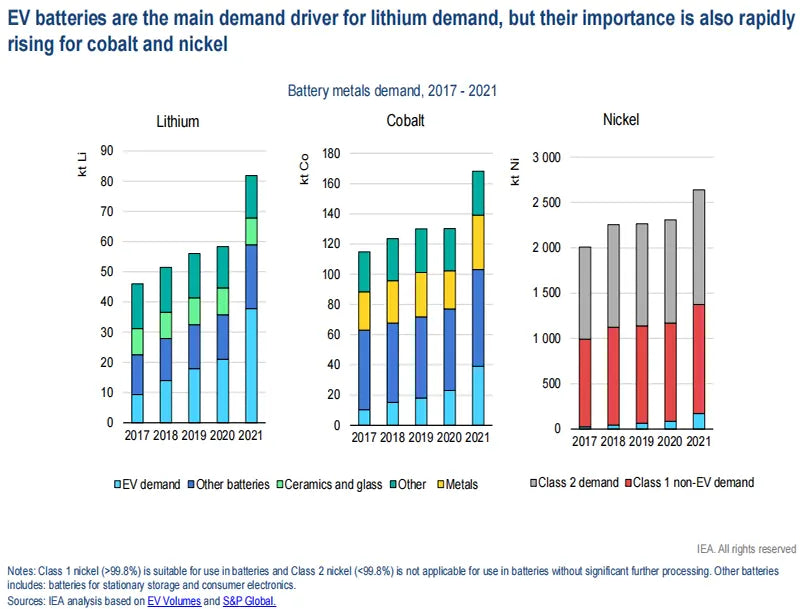
The IEA said battery prices, while down 6% in 2021 to $132/kW, were lower than the 13% decline in 2020 due to higher material prices. If battery metal material prices in 2022 remain at the same level as in the first quarter, other things being equal, lithium ion battery pack prices will be 15% more expensive than in 2021. Price increases are usually accompanied by an increase in the supply of new mines or an extension of the life of existing mines. Sustained high battery metal prices could spur massive supply-side investment to make up for the underinvestment during the downturn in staple commodity prices. The IEA predicts that lithium production will need to increase sixfold and the number of new mines to reach 50 by 2030 to meet growing demand.
Overall, China lead the global electric vehicle market in 2021. The development of electric vehicles is the general trend, but policy support is the main reason for rapid development, and strong policy support is needed to ensure sustainability. In addition, minerals are the focus of the expansion of the battery market, and the rapid growth of electric vehicle sales will test the resilience of the battery supply chain. In the future, accelerating the global adoption of EVs will require expanding EV infrastructure and smart grids, and ensuring a safe, resilient and sustainable EV supply chain.
